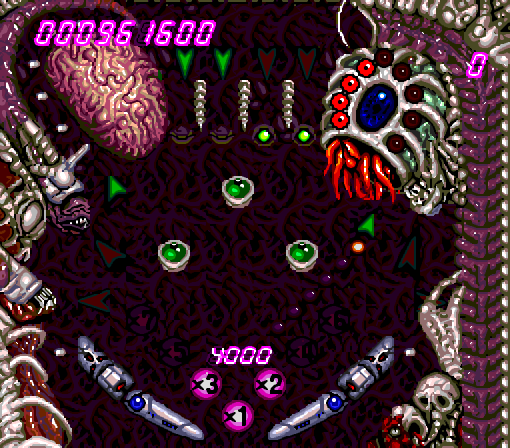

When I was a kid in the late 80s and early 90s, I’d occasionally see a system advertised on TV and in magazines that wasn’t the SNES or the Genesis. It was a thin, matte-black affair that used archaic-looking cards instead of cartridges. Its graphics appeared to be right up there with its more popular rivals, and in fact it seemed to eclipse them in terms of capability. This incredible system was called the TurboGrafx 16, and I used to wonder why more people didn’t talk about it or have one. Eventually, it faded from the foreground of the gaming world, as the Sega CD, 32X, and eventually a whole new generation of consoles came to be. As I grew, and as time continued to pass, I’d always wonder… “what was the TurboGrafx 16 like?”
Two days ago, I got a chance to dive into not only its history, but its game library… a set of titles with surprising variety and amazing vibrancy. I have seen the 512 colors of the rainbow, and nothing looks the same now. I’ve seen wonderful, horrifying, and strange things.

Needless to say, I’m a huge fan now. I want to tell you all I can. Let’s do this!
A Challenger Appears
In 1987, Hudson Soft partnered with NEC to spring a new system on the domestic market. They called it the PC Engine, and it was arguably the first of its kind: a 16 bit home console with graphics and sound rivaling the arcade. The beast’s CPU was still 8-bit, but that’s splitting hairs. The PC Engine boasted 16 bit processors for both its sound and its graphics. In its original Japanese form, the console was around 5 inches square and a little over an inch and a half thick… meaning, at the time, it held the record for the smallest home console ever. That’s a lot of power in such a tiny package. Keep in mind that this is in 1987. The NES had been released only two years prior, and the Mega Drive wouldn’t be around until October of ’88. Sunsoft and NEC had achieved alchemy. To add a final uppercut to the battle in the Japanese market, they released a CD ROM attachment two months after the Mega Drive was released… the first one ever on a home gaming console.

Wait, guys… I lied. One last ball buster. Guess who also released the first fully portable console that used the same media as its plug-in-the-wall progenitor?

In the summer of 1989, the PC Engine was given a slight makeover and dropped on the US like a bomb… that bomb’s name was TurboGrafx 16. The system and its games were initially a huge hit, especially on the West coast, and among the hardcore gamers of the time; the true cultists and curators, the devoted.
Let’s talk about the games… There are so many worth mentioning, but I’ll touch on the brightest and best.
Lunatic Weird-Ass Pinball Games I Can’t Stop Playing

Alien Crush and Devil’s Crush are pretty legendary entries in the PC Engine game library. With minor changes, they made it to US Shores and fascinated players. They feature bizarre, phantasmagorical graphics as well as eerie music that seems absolutely appropriate.
A woman’s face gradually morphs into that of a hideous reptile. Bonus stages include space worms and a trio of bug-eyed undead faces. You get points for smashing little demons with the silver ball and firing it into the mouths of nightmarish beasts. The entire experience is enthralling, and I’ve already poured hours into both games.
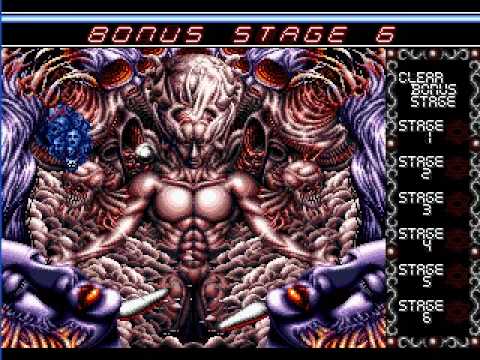
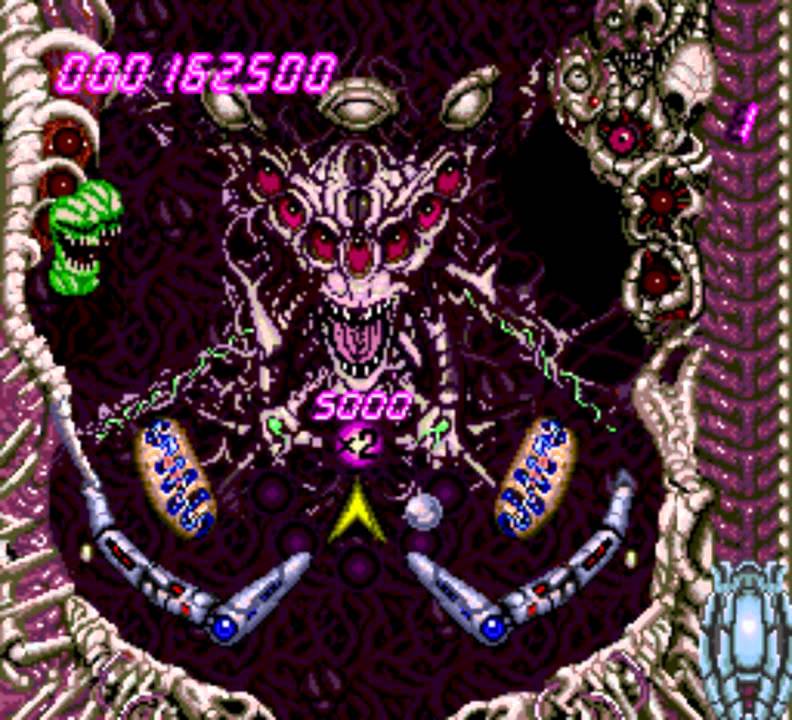
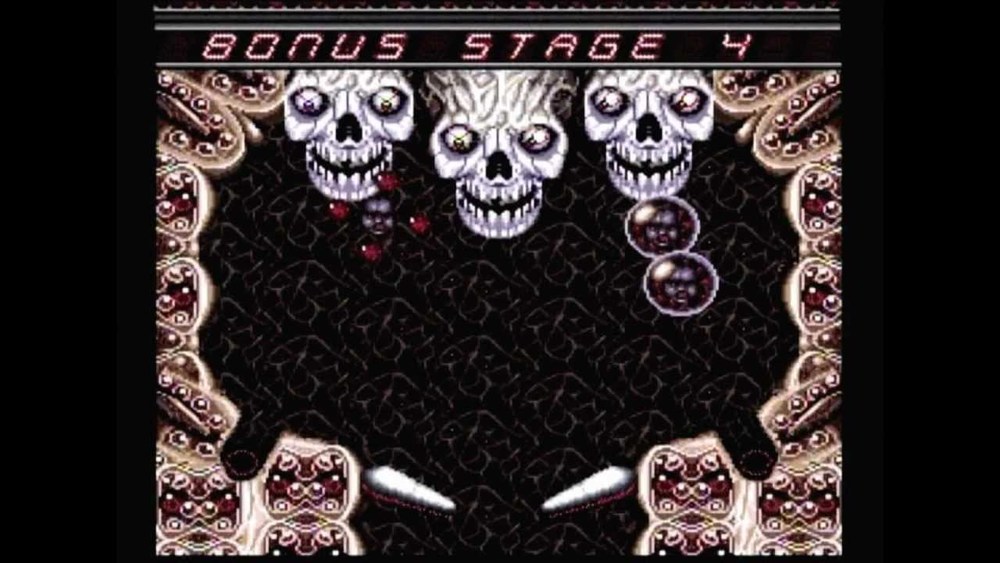
About Twenty Million Shooters
Gradius was released for the PC Engine, and that version is considered one of the better ones. Its sequels saw release for the system as well, and were similarly beautiful games. In addition, about one metric ton of shoot em up games were produced for the console if you count both international and Japan-only titles. Hyper Dyne Side Arms is a pretty innovative one, and the infamous Zero Wing was also a hit in Japan. The genre is one of my favorites (and one of few types of game I’m actually decent at), so I was thrilled to see the huge library of shooters. I’m still picking through them, and will be for a while.
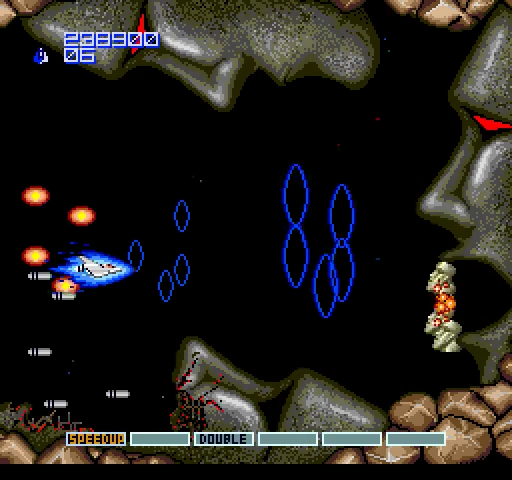

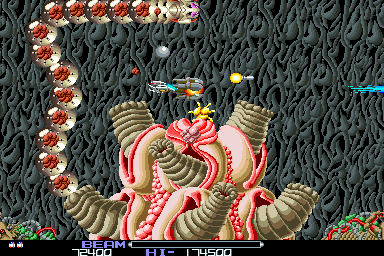
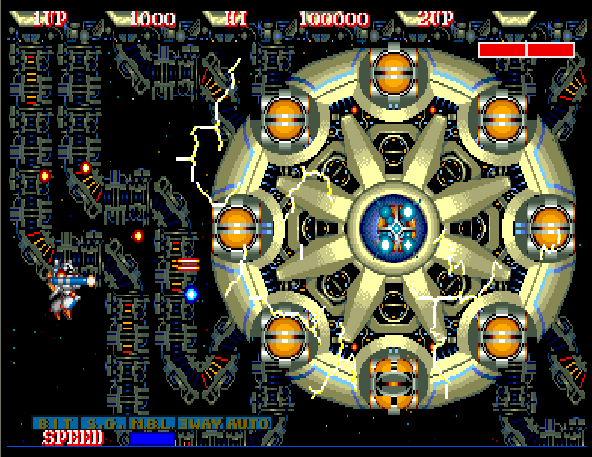
Gradius 2, Image Fight, R-Type, and Hyper Dyne Side Arms, four of roughly a billion shooters for the PC Engine/TurboGrafx 16.
The Only Easily Available Version of Splatterhouse We Had for a Long Time
I’ve written about Splatterhouse before. It’s amazing, gory, violent, scary, and it’s a masterpiece. It was ported to this system early after its arcade release, with very minor changes. The USA didn’t get a ton of Splatterhouse arcade cabinets, but we did get the TG-16 port and all the mayhem that came with it. Sure, his mask is red. Sure, some of the upside-down crosses and other stuff are removed. It’s still the same game, and it still came with a warning that excited you and scared your parents. It wasn’t until the “modern” era of gaming that a lot of us were exposed to the original article, well after we’d seen the entertaining but visually watered-down sequels on Genesis.

I Am Not Kidding About the Game Called Toilet Kids
A Japanese title, Toilet Kids involves a magical journey through a land filled with (made of?) poop.

I’m going to let some pictures speak for themselves, and I’m going to let you plumb further (pun intended) if you’re curious. It’s a shoot em up, you fly on a toilet I think, and you dogfight with all kinds of crazy dook monsters. The graphics and sound are incredible… I’ve never witnessed cartoon turds so vividly, nor have I wanted to.


So Why Didn’t It Make the Grade?
Initially, it did! The original console sold well in Japan, as did the handful of peripherals and add-ons. The American market had a few complaints, though: Firstly, while the games were awesome, there weren’t many of them by well-known third parties like Konami, Capcom, etc. and a lot of popular titles got passed over for a TG-16 port. On a related note,the first-party games that made it across the Pacific to us often seemed… weird to the mainstream video gamer. They were ultimately better suited to the Japanese market. Another common gripe was the controller. It seemed outdated with its 2 buttons when compared to its contemporary rivals in the USA. All in all, while critics praised the game library in objective terms, the whole affair just seemed out of phase.

Why You Should Still Have a Look if You Get a Chance
This system, this revolutionary little machine, broke the door down and hardly gets credit for it today. It fired the first round in what became one of the most amazing market battles in gaming history… the classic console wars we all remember from that era. The PC Engine deserves its place in retro gaming history, and any true student of the subject will take a good look.
To quote a certain bowler-wearing hoodlum, viddy well.

Oh… and stay retro. 😉

